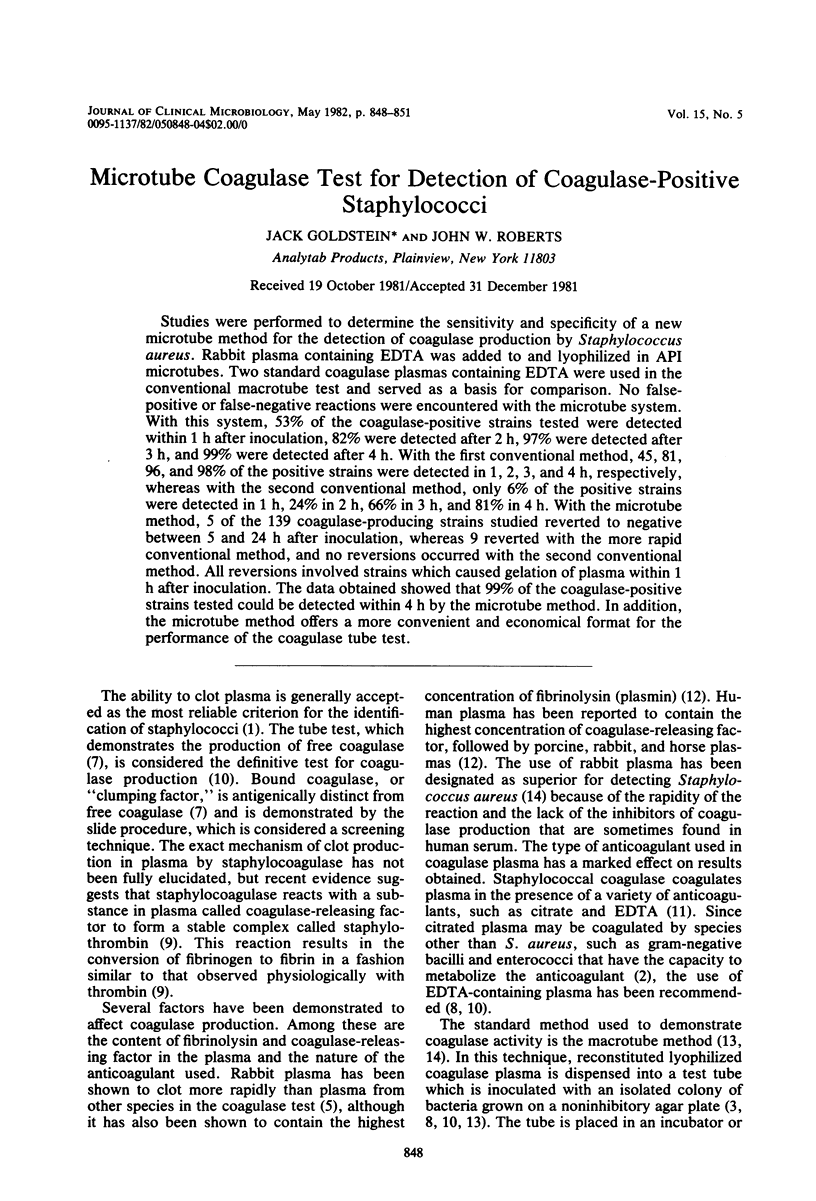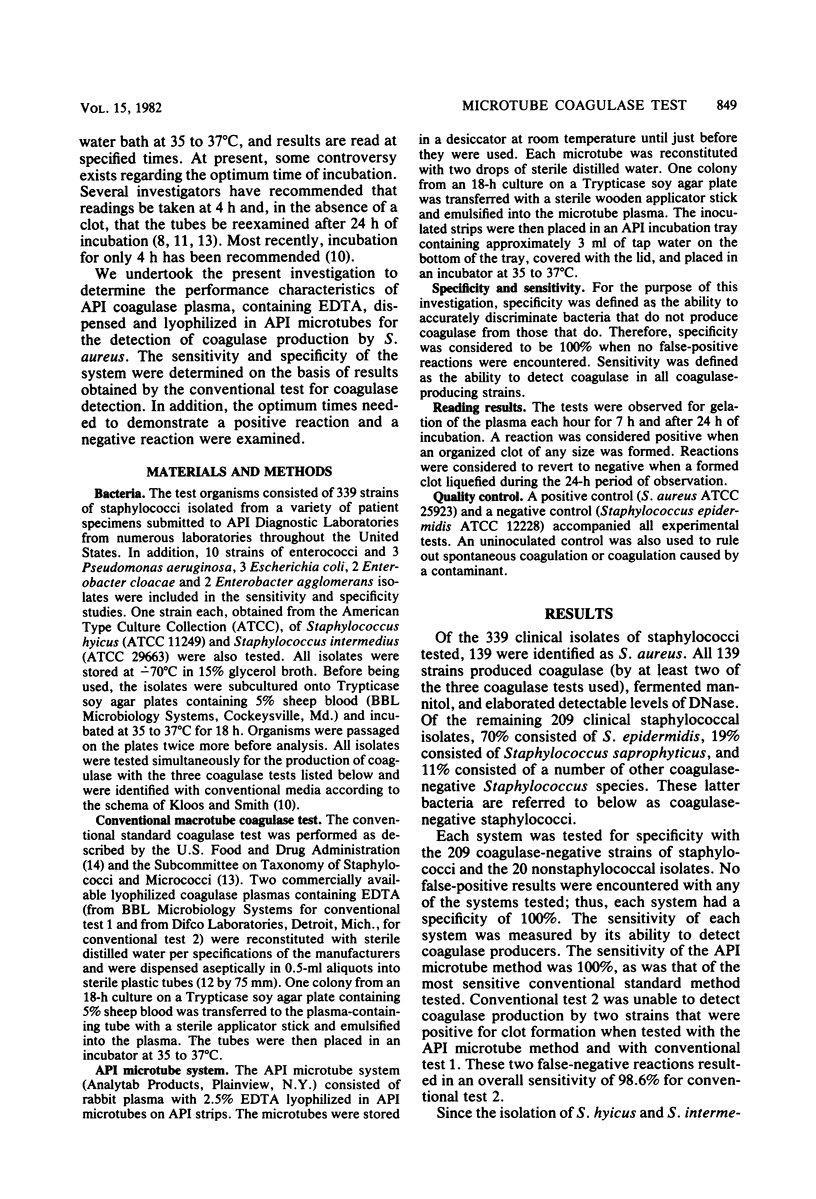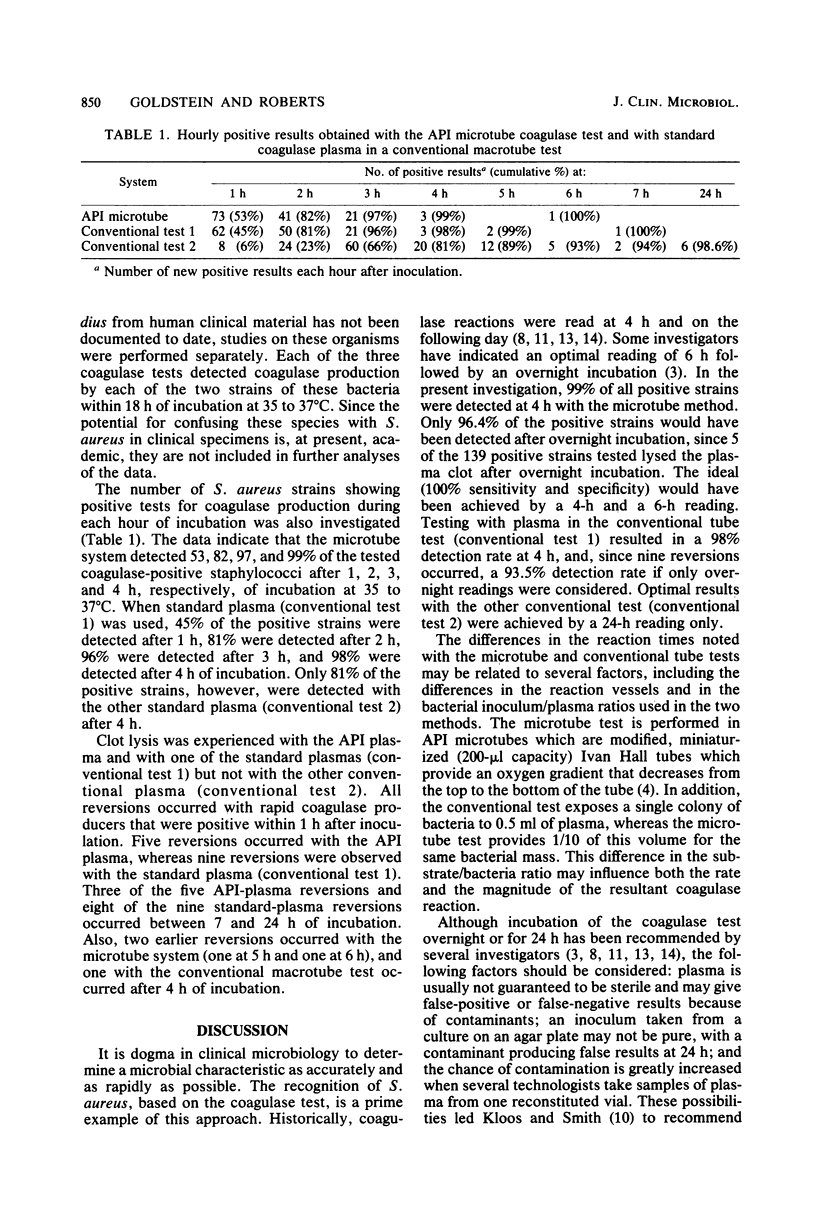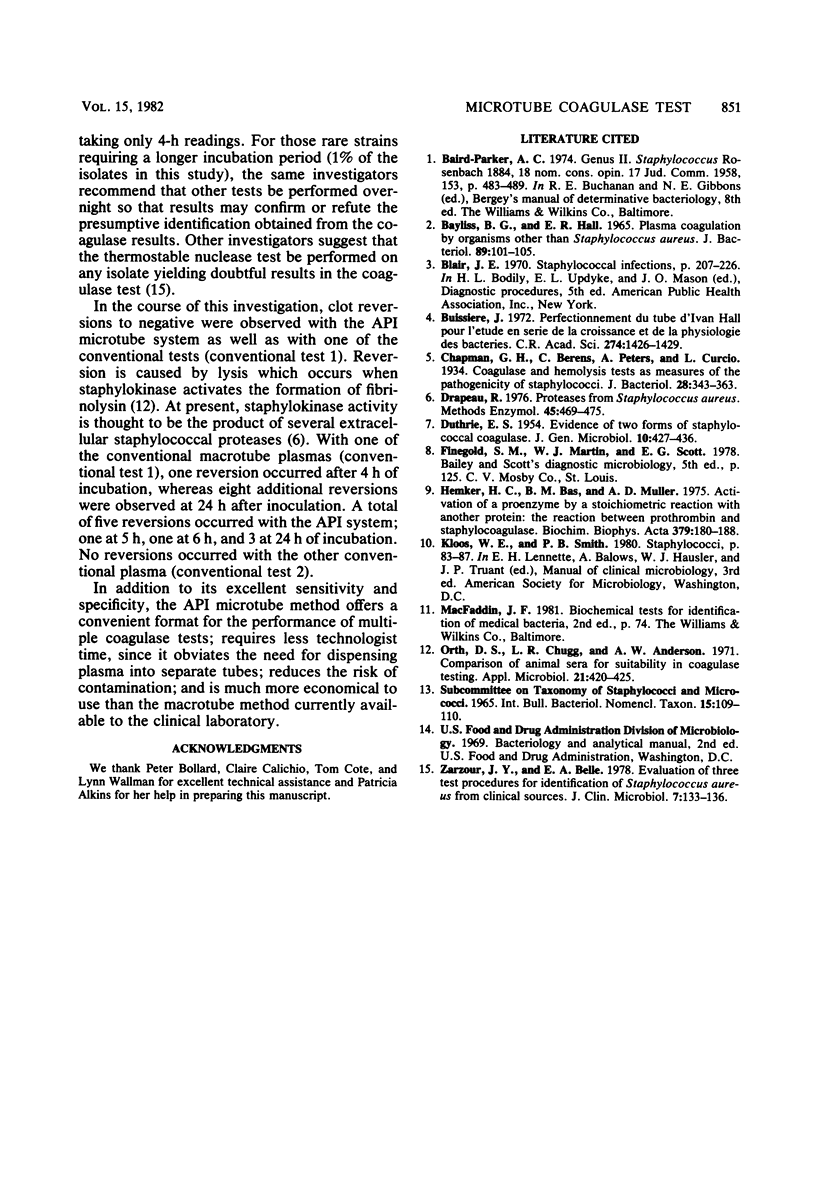Abstract
Studies were performed to determine the sensitivity and specificity of a new microtube method for the detection of coagulase production by Staphylococcus aureus. Rabbit plasma containing EDTA was added to and lyophilized in API microtubes. Two standard coagulase plasmas containing EDTA were used in the conventional macrotube test and served as a basis for comparison. No false-positive or false-negative reactions were encountered with the microtube system. With this system, 53% of the coagulase-positive strains tested were detected within 1 h after inoculation, 82% were detected after 2 h, 97% were detected after 3 h, and 99% were detected after 4 h. With the first conventional method, 45, 81, 96, and 98% of the positive strains were detected in 1, 2, 3, and 4 h, respectively, whereas with the second conventional method, only 6% of the positive strains were detected in 1 h, 24% in 2 h, 66% in 3 h, and 81% in 4 h. With the microtube method, 5 of the 139 coagulase-producing strains studied reverted to negative between 5 and 24 h after inoculation, whereas 9 reverted with the more rapid conventional method, and no reversions occurred with the second conventional method. All reversions involved strains which caused gelation of plasma within 1 h after inoculation. The data obtained showed that 99% of the coagulase-positive strains tested could be detected within 4 h by the microtube method. In addition, the microtube method offers a more convenient and economical format for the performance of the coagulase tube test.
Full text
PDF



Selected References
These references are in PubMed. This may not be the complete list of references from this article.
- BAYLISS B. G., HALL E. R. PLASMA COAGULATION BY ORGANISMS OTHER THAN STAPHYLOCOCCUS AUREUS. J Bacteriol. 1965 Jan;89:101–105. doi: 10.1128/jb.89.1.101-105.1965. [DOI] [PMC free article] [PubMed] [Google Scholar]
- Buissière J. Perfectionnement du tube d'Ivan Hall pour l'étude en série de la croissance et de la physiologie des bactéries. C R Acad Sci Hebd Seances Acad Sci D. 1972 Feb 28;274(9):1426–1429. [PubMed] [Google Scholar]
- Chapman G. H., Berens C., Peters A., Curcio L. Coagulase and Hemolysin Tests as Measures of the Pathogenicity of Staphylococci. J Bacteriol. 1934 Oct;28(4):343–363. doi: 10.1128/jb.28.4.343-363.1934. [DOI] [PMC free article] [PubMed] [Google Scholar]
- DUTHIE E. S. Evidence for two forms of staphylococcal coagulase. J Gen Microbiol. 1954 Jun;10(3):427–436. doi: 10.1099/00221287-10-3-427. [DOI] [PubMed] [Google Scholar]
- Drapeau G. R. Protease from Staphyloccus aureus. Methods Enzymol. 1976;45:469–475. doi: 10.1016/s0076-6879(76)45041-3. [DOI] [PubMed] [Google Scholar]
- Hemker H. C., Bas B. M., Muller A. D. Activation of a pro-enzyme by a stoichiometric reaction with another protein. The reaction between prothrombin and staphylocoagulase. Biochim Biophys Acta. 1975 Jan 30;379(1):180–188. doi: 10.1016/0005-2795(75)90020-3. [DOI] [PubMed] [Google Scholar]
- Orth D. S., Chugg L. R., Anderson A. W. Comparison of animal sera for suitability in coagulase testing. Appl Microbiol. 1971 Mar;21(3):420–425. doi: 10.1128/am.21.3.420-425.1971. [DOI] [PMC free article] [PubMed] [Google Scholar]
- Zarzour J. Y., Belle E. A. Evaluation of three test procedures for identification of Staphylococcus aureus from clinical sources. J Clin Microbiol. 1978 Feb;7(2):133–136. doi: 10.1128/jcm.7.2.133-136.1978. [DOI] [PMC free article] [PubMed] [Google Scholar]


